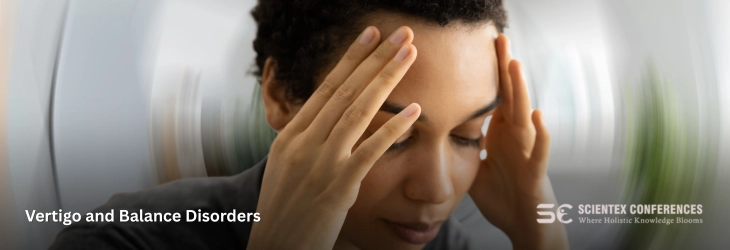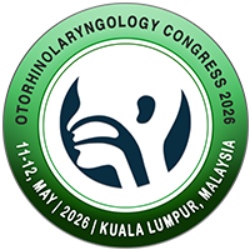Track: Vertigo and Balance Disorders

Session Overview:
This session aims to provide a comprehensive overview of vertigo and balance disorders, focusing on their underlying causes, clinical presentation, and evidence-based management strategies. Participants will be introduced to the anatomy and physiology of the vestibular system, along with the diagnostic approach to differentiate between peripheral and central causes of vertigo. The session will also cover current treatment modalities, including vestibular rehabilitation therapy, pharmacologic interventions, and surgical options when indicated
Recent Development:
Recent advancements in the understanding and management of vertigo and balance disorders have led to more accurate diagnostics and targeted therapies, significantly improving patient care. Developments in vestibular function testing, such as video head impulse testing (vHIT), vestibular evoked myogenic potentials (VEMP), and computerized dynamic posturography, have enhanced the ability to localize and characterize vestibular dysfunction. Neuroimaging techniques, including high-resolution MRI, have further refined the diagnosis of central causes of vertigo. In terms of treatment, there has been growing evidence supporting the efficacy of vestibular rehabilitation therapy (VRT), especially with the integration of virtual reality and computer-assisted balance training.
Sub Tracks:
Vestibular Neuritis:
Vestibular neuritis is an inflammation of the vestibular nerve, typically caused by a viral infection, leading to sudden, severe vertigo without hearing loss. It usually resolves over days to weeks, with vestibular rehabilitation aiding recovery.
Ménière’s Disease:
Ménière’s disease is a chronic inner ear disorder characterized by episodic vertigo, fluctuating hearing loss, tinnitus, and a sensation of ear fullness. It is thought to result from abnormal fluid buildup in the inner ear (endolymphatic hydrops).
Labyrinthitis:
Labyrinthitis is an inner ear infection or inflammation affecting both the vestibular and auditory systems, causing vertigo and hearing loss. It can be viral or bacterial and often requires symptomatic treatment along with vestibular rehabilitation.
Dix-Hallpike Maneuver:
The Dix-Hallpike maneuver is a diagnostic test used to identify benign paroxysmal positional vertigo (BPPV), particularly involving the posterior semicircular canal. It involves rapidly moving the patient from a sitting to a supine position with the head turned, observing for nystagmus and vertigo.
Electronystagmography (ENG):
Electronystagmography (ENG) is a diagnostic test that measures involuntary eye movements (nystagmus) to assess the function of the inner ear and central motor functions. It is commonly used to evaluate patients with dizziness, vertigo, or balance disorders.
Vestibular Rehabilitation Therapy (VRT):
Vestibular rehabilitation therapy is a specialized form of physical therapy designed to alleviate symptoms of vertigo and imbalance through exercises that promote central compensation. It is particularly effective for conditions like vestibular neuritis and BPPV.
Labyrinthectomy:
Labyrinthectomy is a surgical procedure that removes or disables the labyrinth of the inner ear to treat intractable vertigo, typically in patients with non-serviceable hearing. It is considered a last-resort treatment for severe cases of Ménière’s disease.
Scientific Highlights
- Anatomical and Physiological Disorders of ENT
- Lung Disease Airway Issues
- ENT Infections and allergies
- New treatment Advances in Otolaryngology
- Ear & Nose plastic surgery
- Endoscopic and laparoscopic ENT surgery
- Craniofacial & Facial surgery
- Otology and Neurotology
- ENT Microsurgery
- COVID 19 and ENT
- Pediatric Otolaryngology
- Speech and Swallowing Disorders
- Head and Neck Surgery
- Airway Management & Surgery
- ENT Allergies & Immunotherapy
- Surgical Techniques in ENT
- Nasal Polyposis and Biologic Therapy
- Advances in Cochlear Implants
- Recent Advances in Otorhinolaryngology
- Vertigo and Balance Disorders


